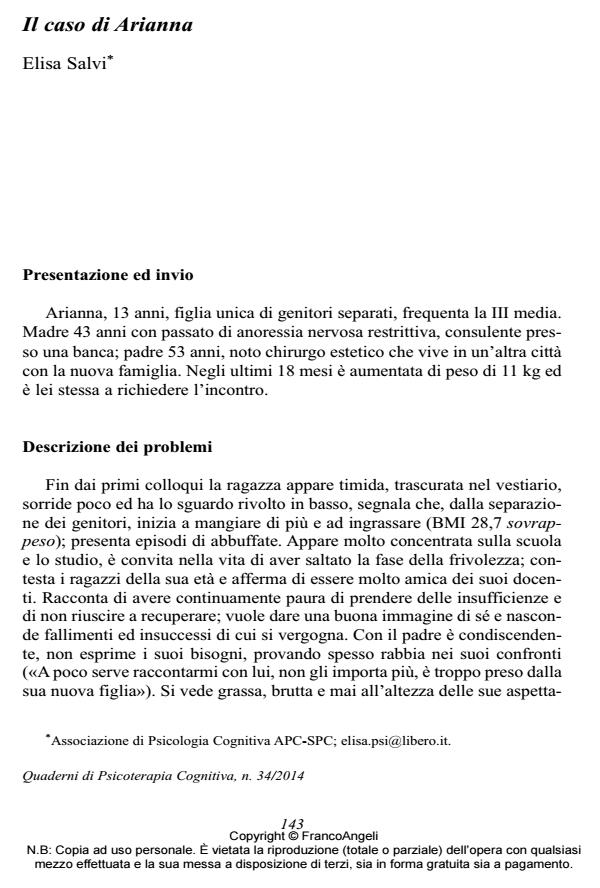The Arianna’s case
Journal title QUADERNI DI PSICOTERAPIA COGNITIVA
Author/s Renzo Salvi
Publishing Year 2014 Issue 2014/34
Language Italian Pages 12 P. 143-154 File size 115 KB
DOI 10.3280/QPC2014-034010
DOI is like a bar code for intellectual property: to have more infomation
click here
Below, you can see the article first page
If you want to buy this article in PDF format, you can do it, following the instructions to buy download credits

FrancoAngeli is member of Publishers International Linking Association, Inc (PILA), a not-for-profit association which run the CrossRef service enabling links to and from online scholarly content.
The case we describe is Arianna (a 13 years old female student). She is daughter of separated parents, and lives with her mother. After the removal of the father, she started to have weight problems, with a ponderal increase of 11 kg, associated to a mood decrease. In this manuscript we describe the steps of psychotherapy suitable in a girl suffering from both eating disorder and major depressive disorder. Therapy aims were: 1. help the patient to change the relationship with her eating disorder; 2. help to develop a meta cognitive selfawareness; 3. reduce the depressive symptomatology. As consequence of the achieving of therapy objectives, patient would develop an useful mindset to globally redefine the way she looks herself and the world around.
Keywords: Eating disorder, depressive disorder, therapy relationship
Renzo Salvi, Il caso di Arianna in "QUADERNI DI PSICOTERAPIA COGNITIVA" 34/2014, pp 143-154, DOI: 10.3280/QPC2014-034010